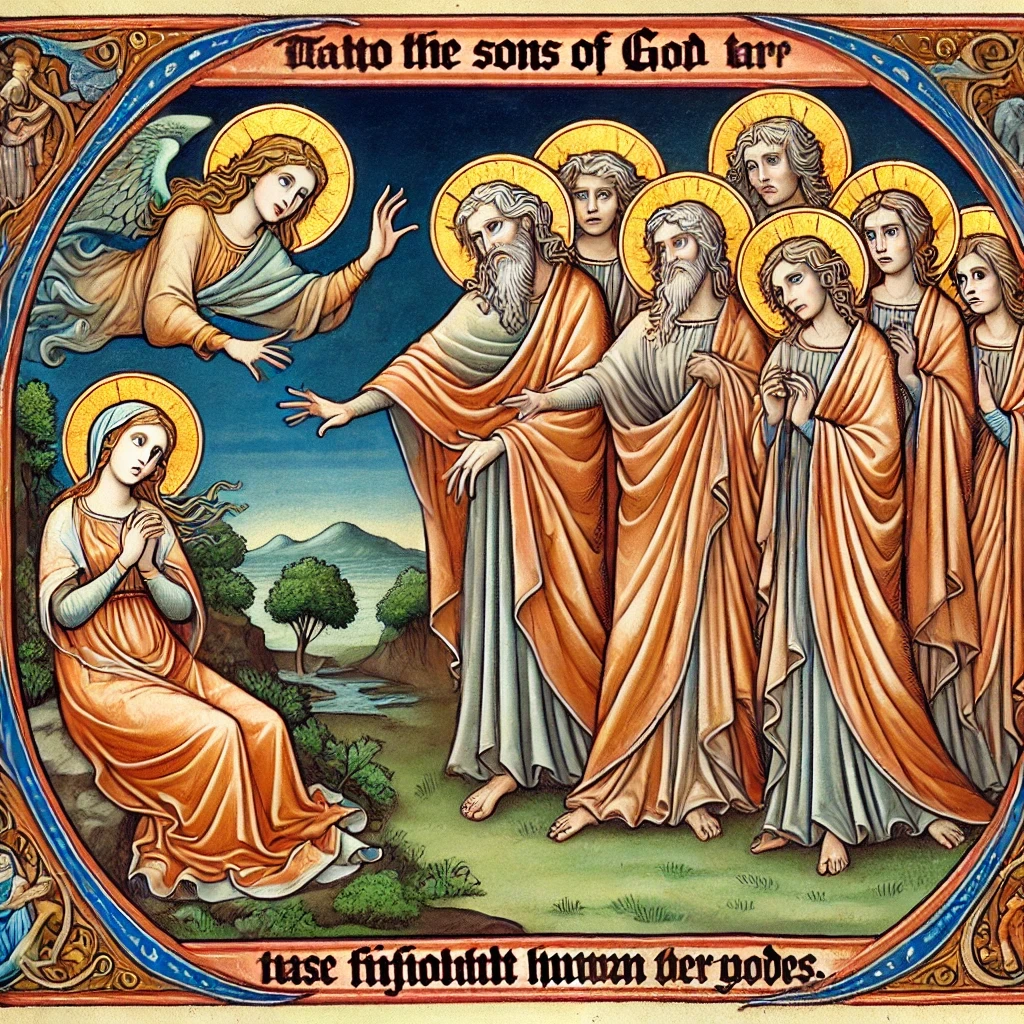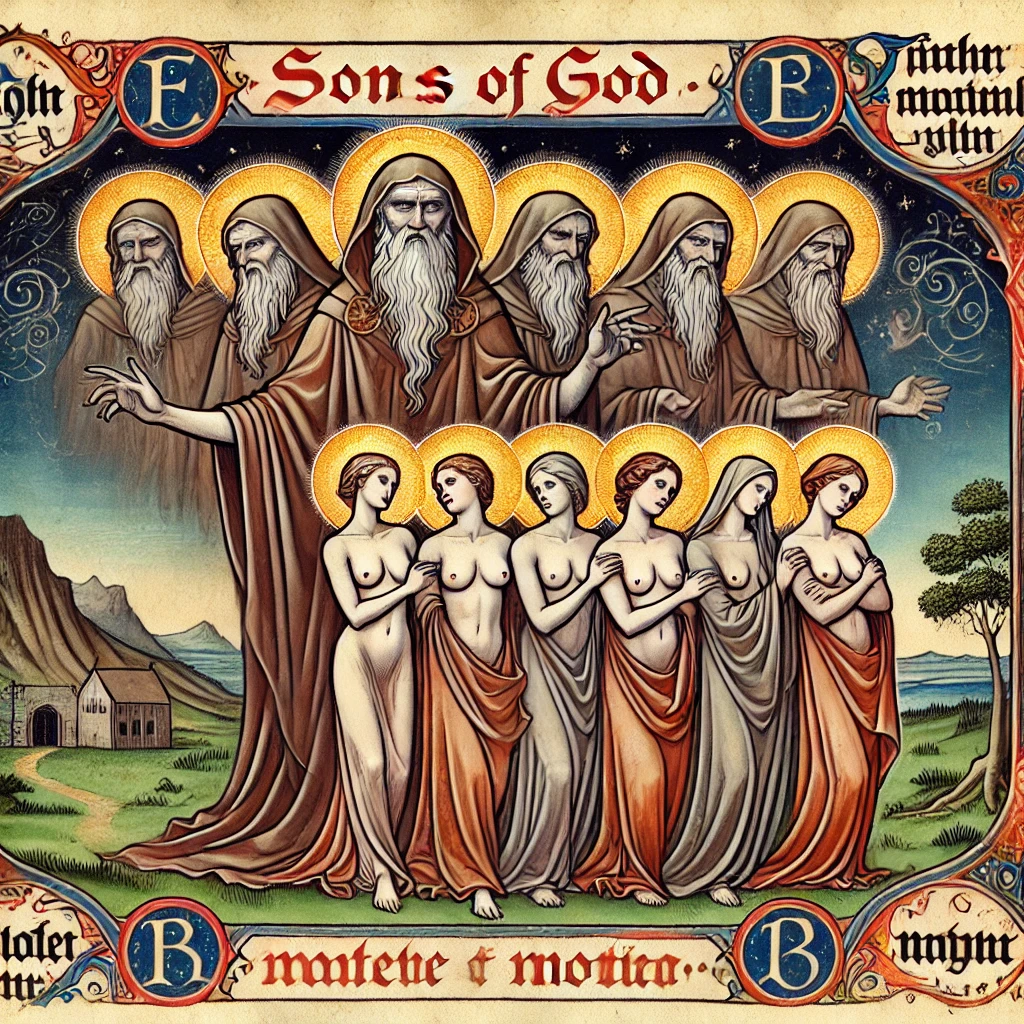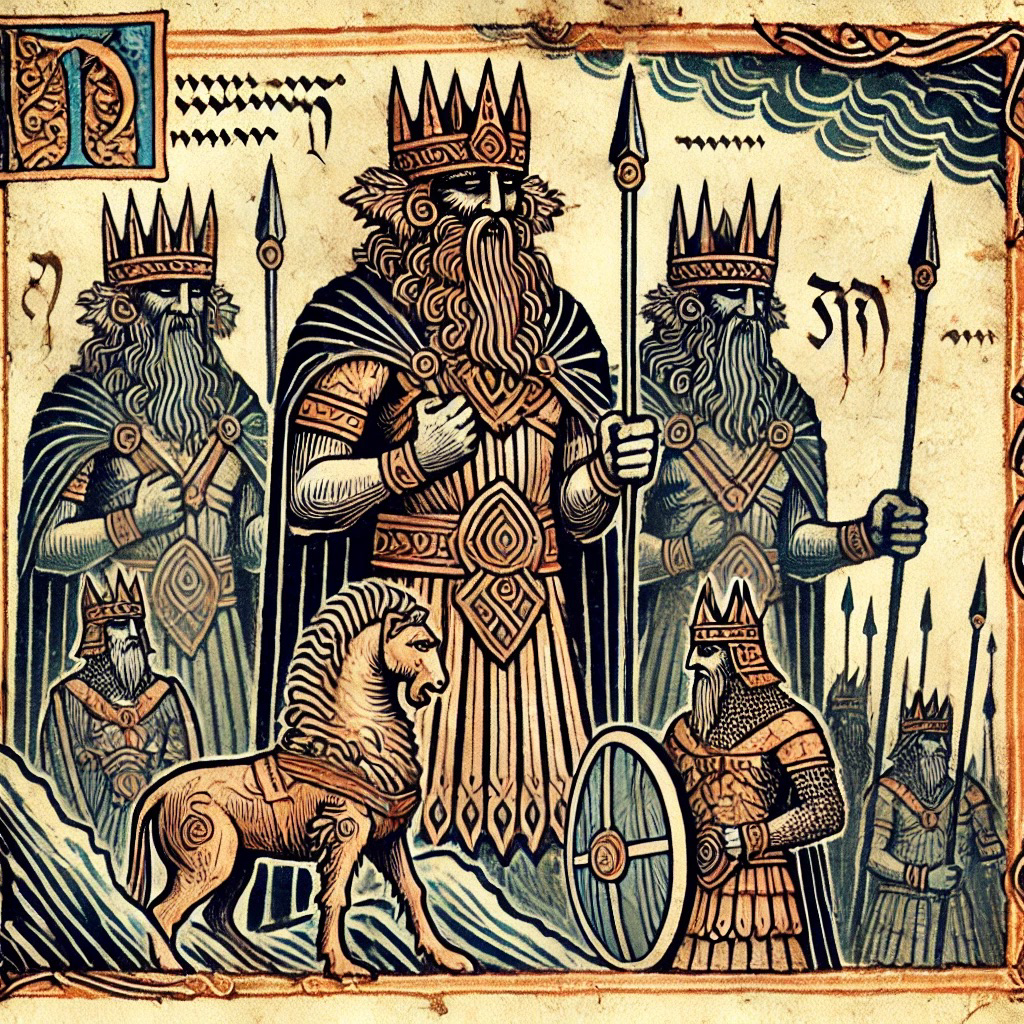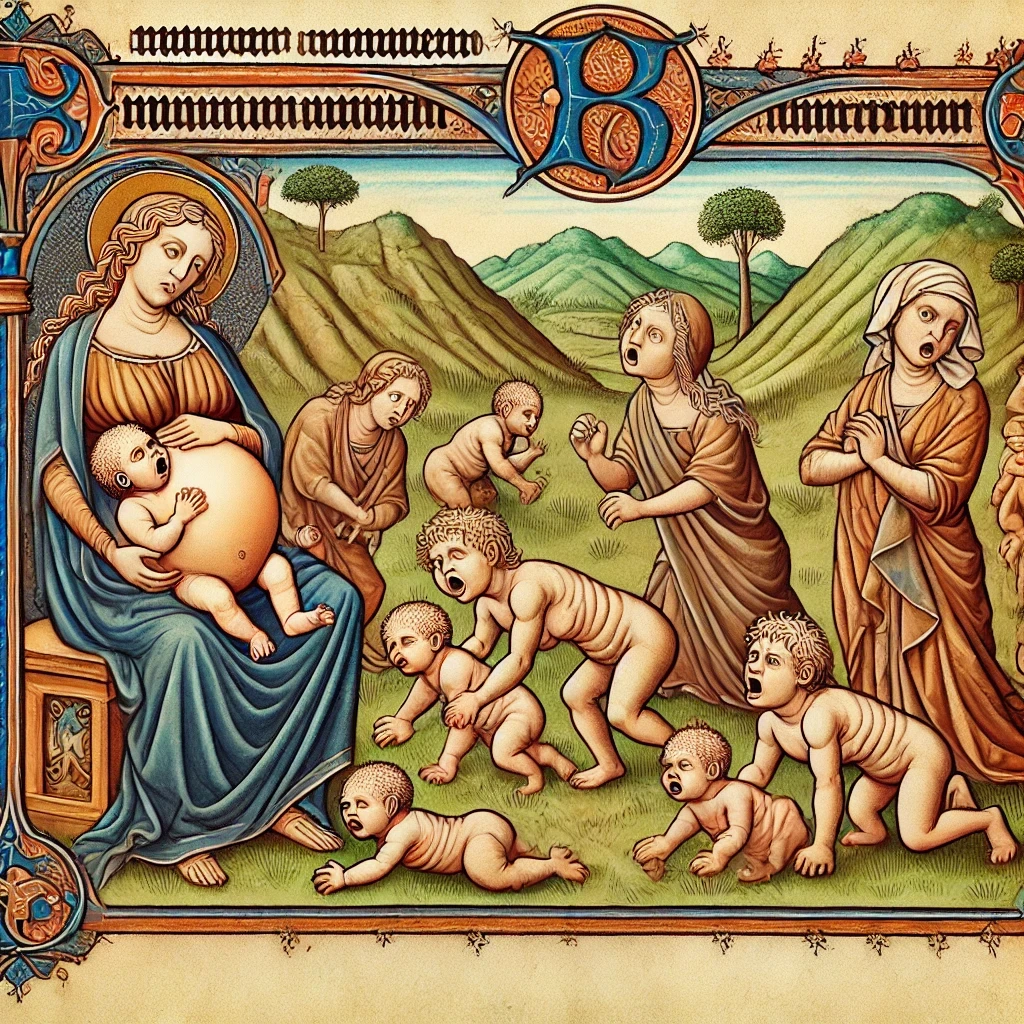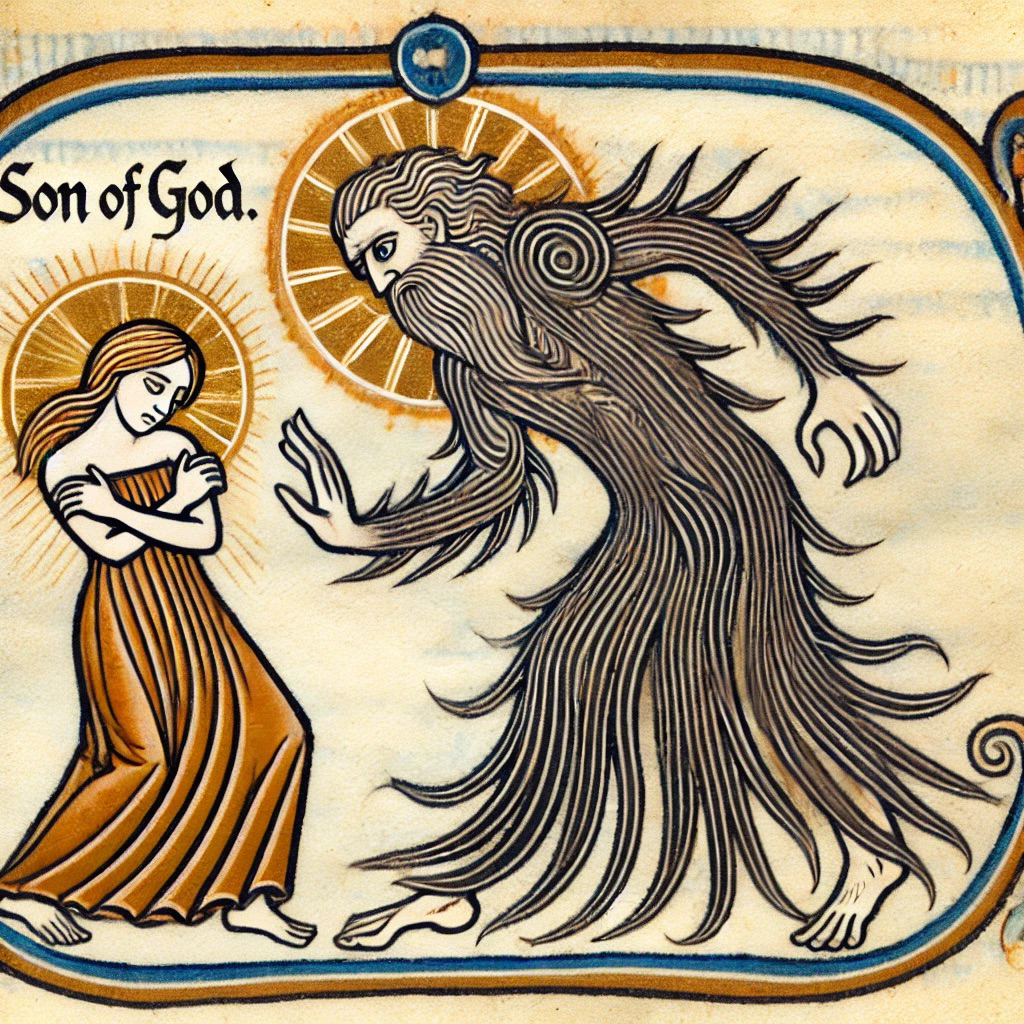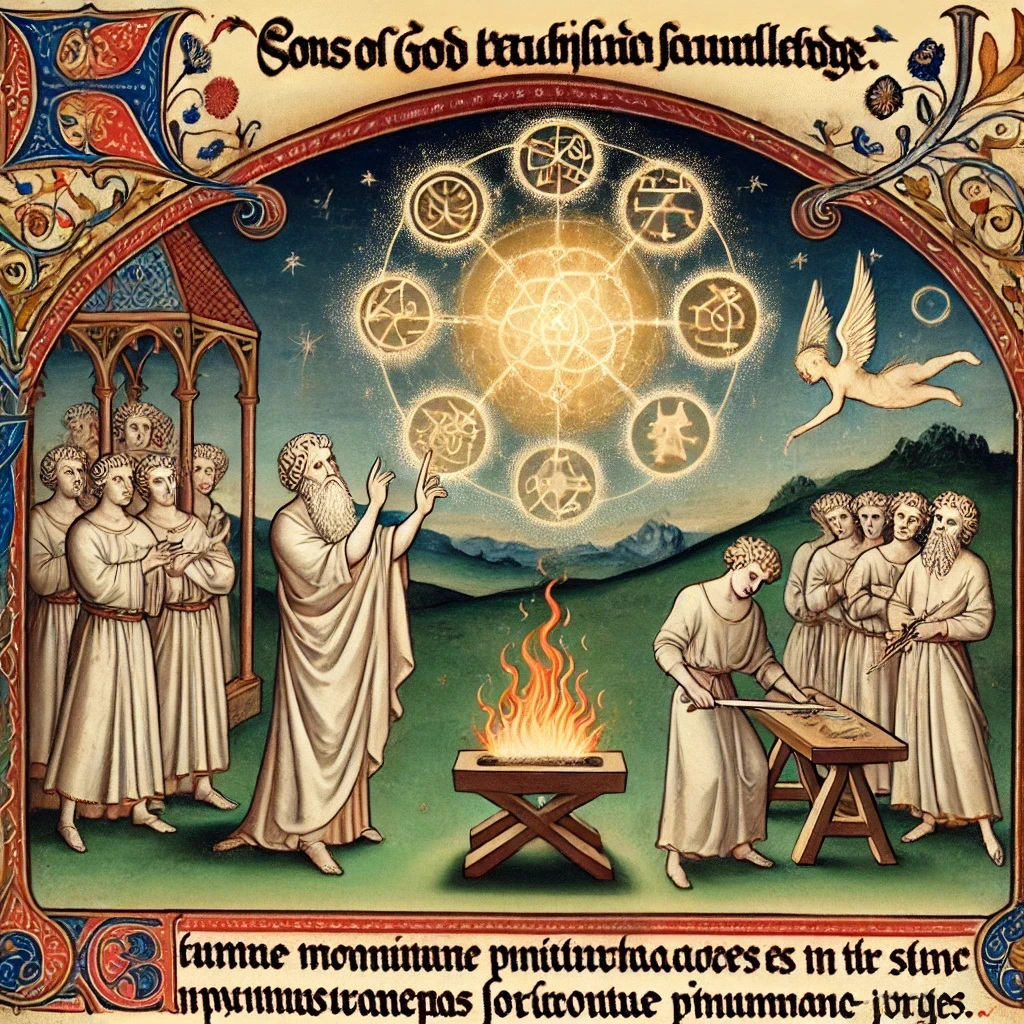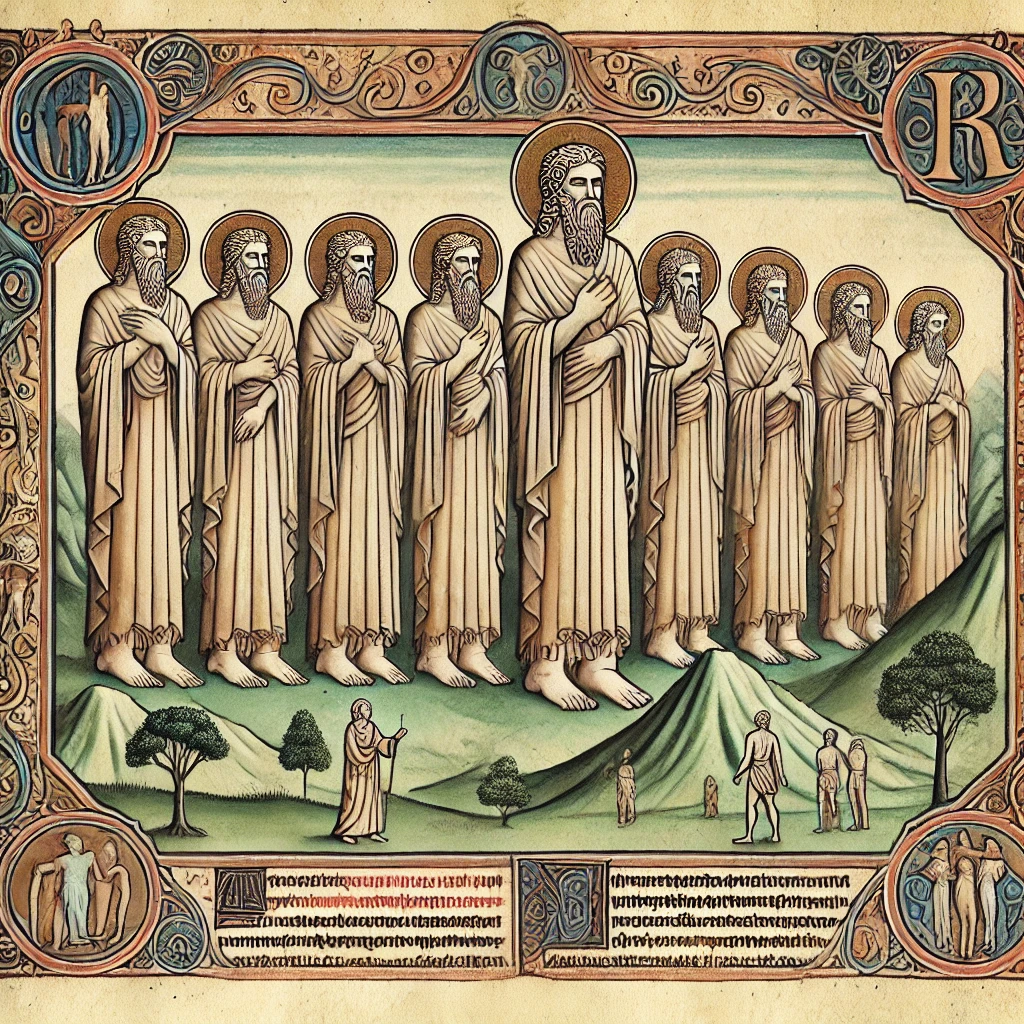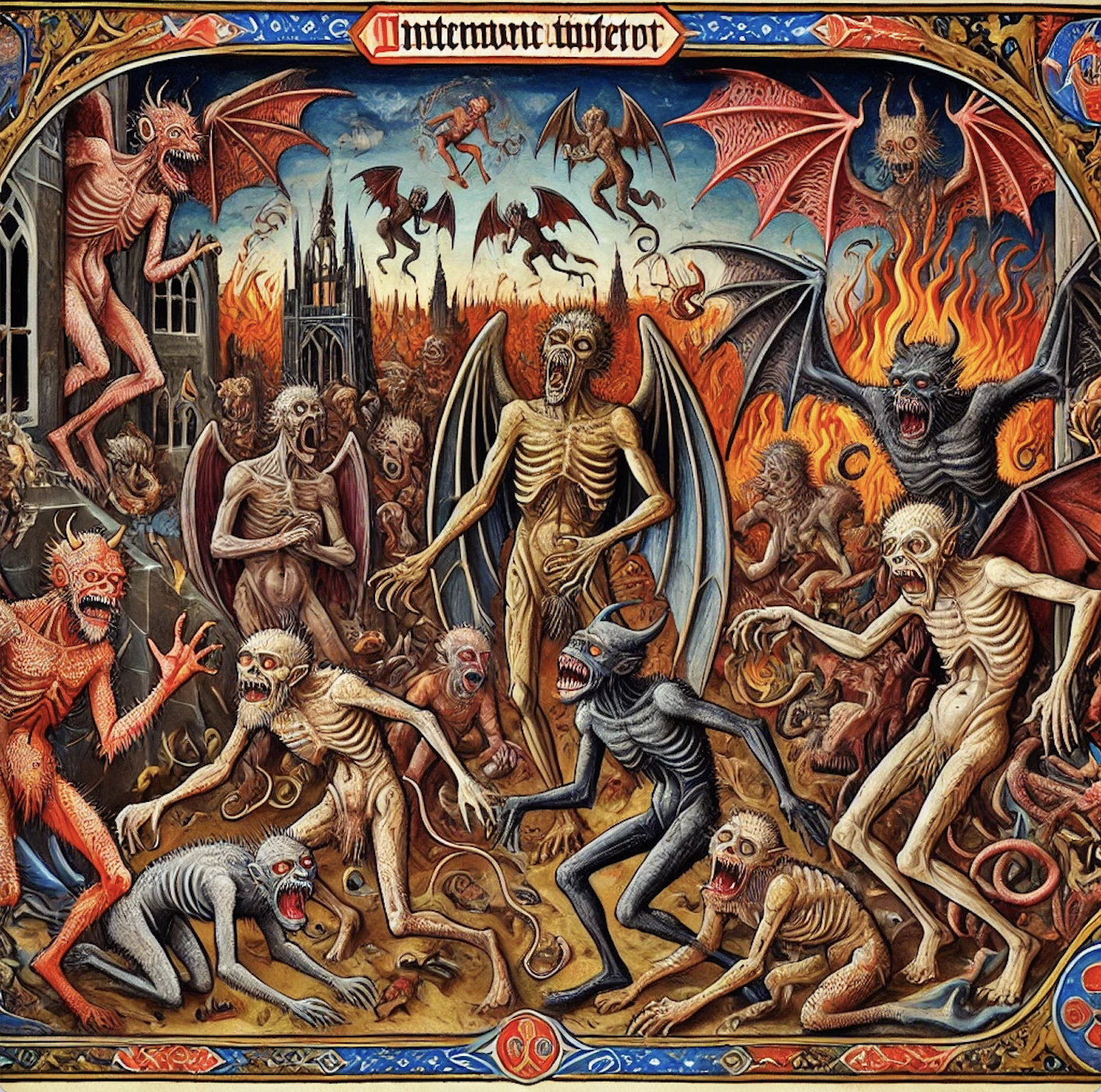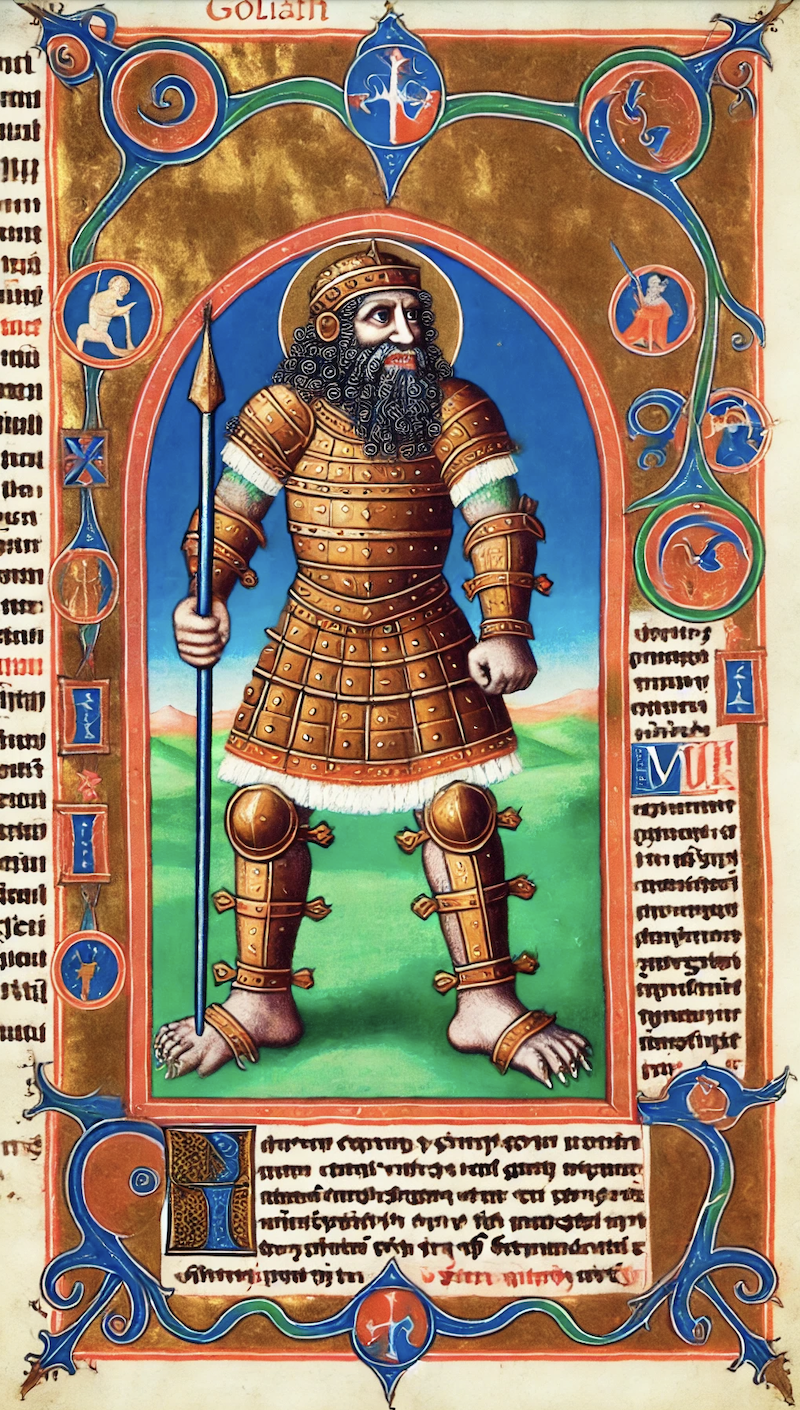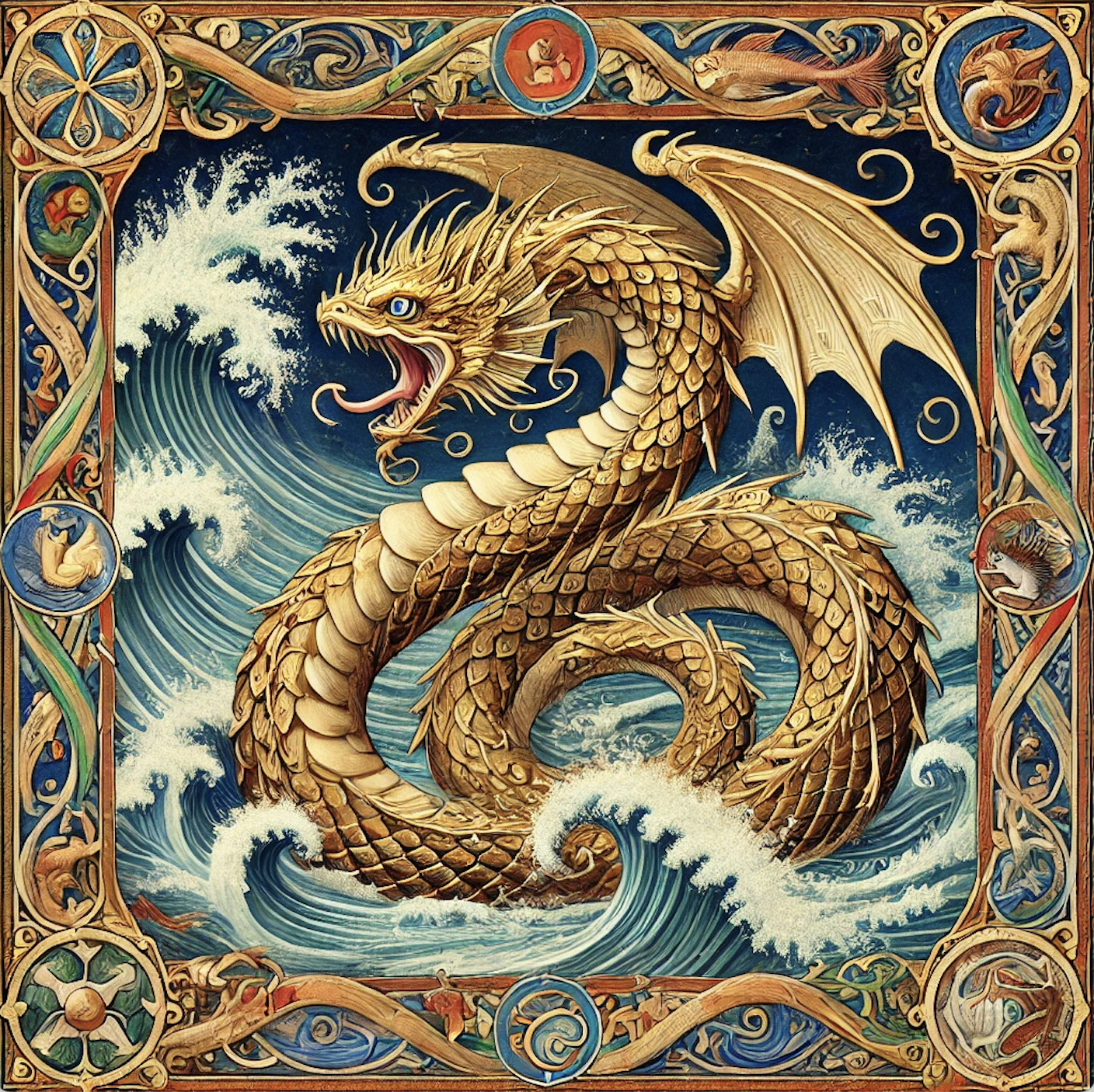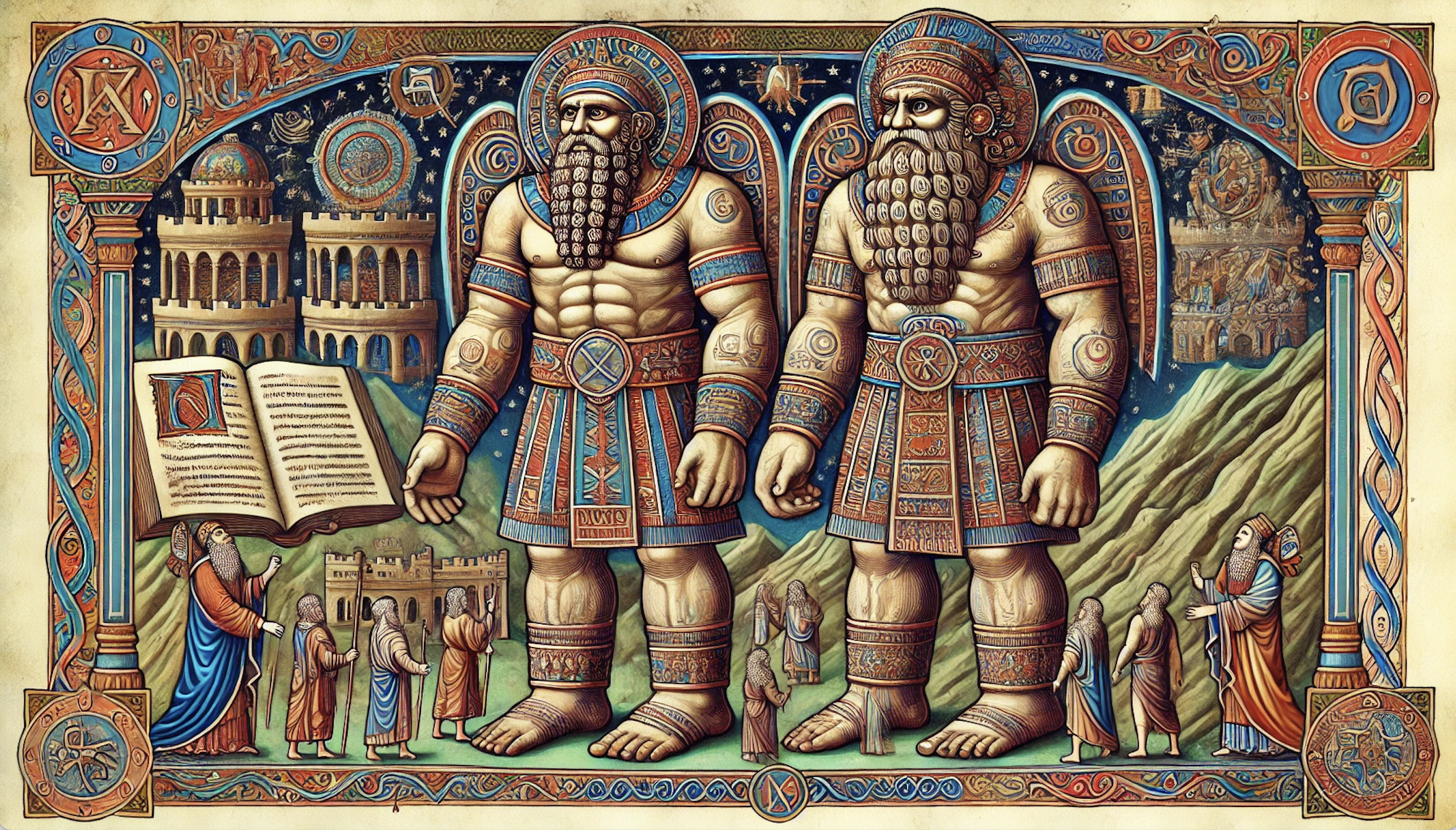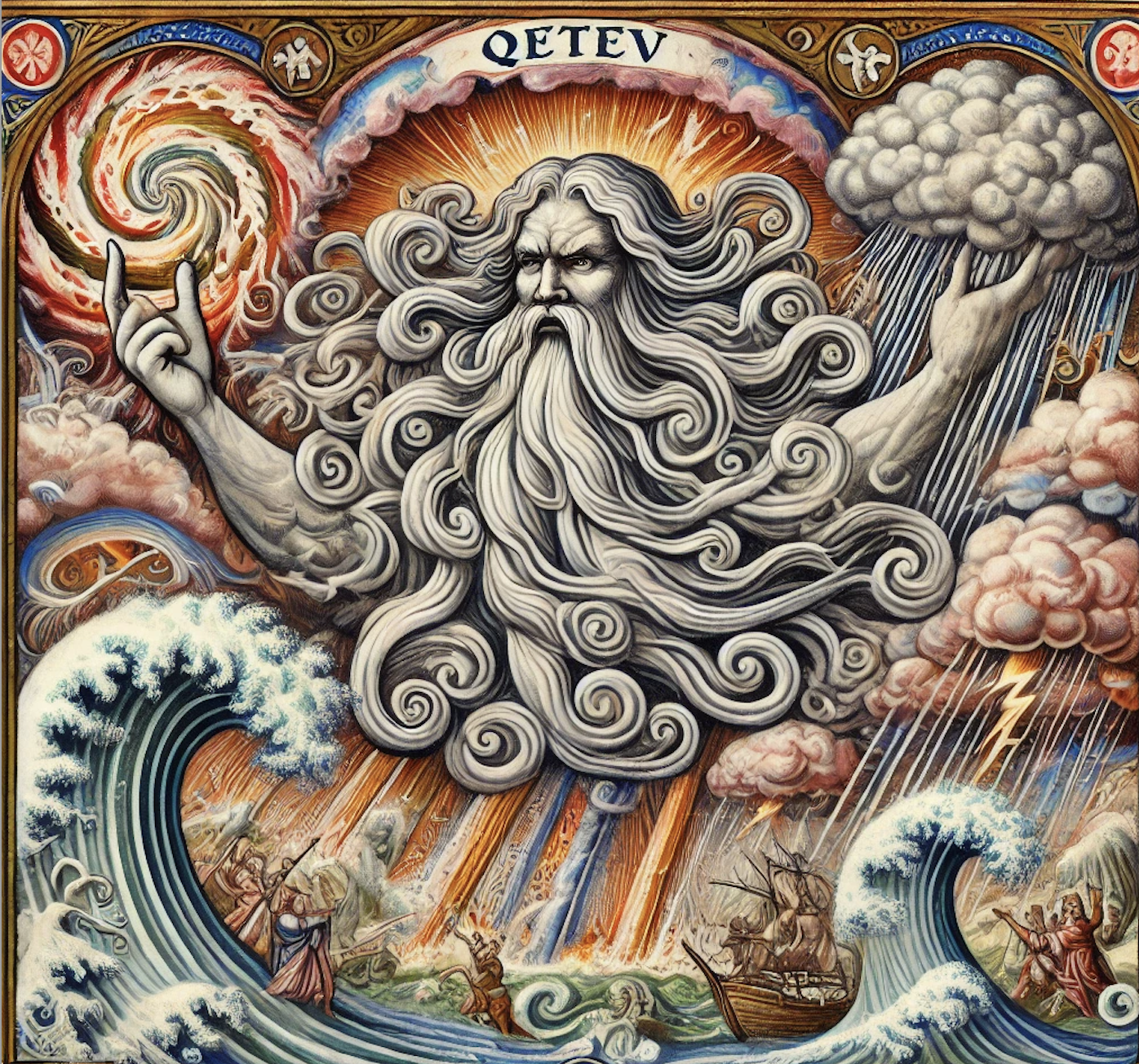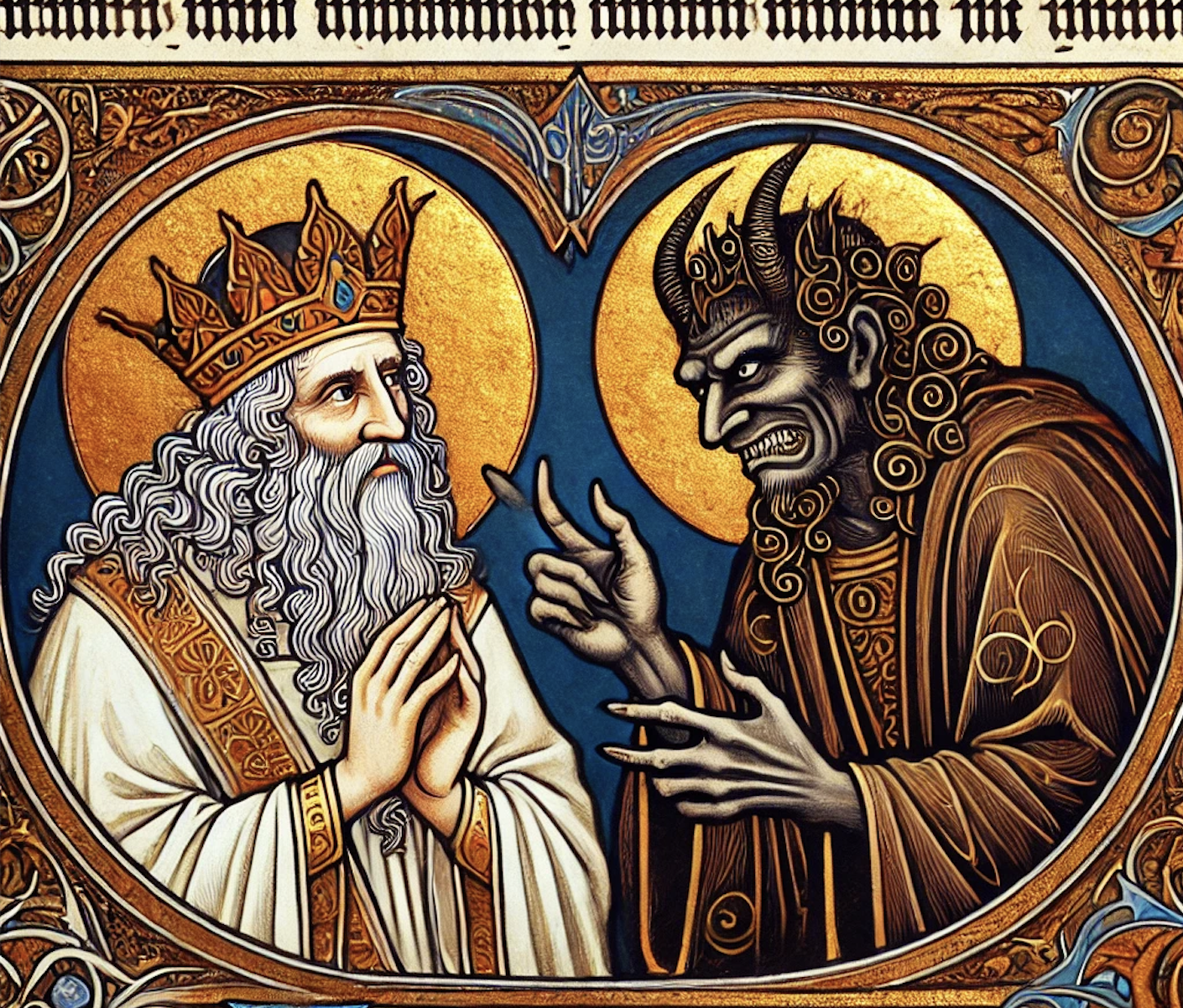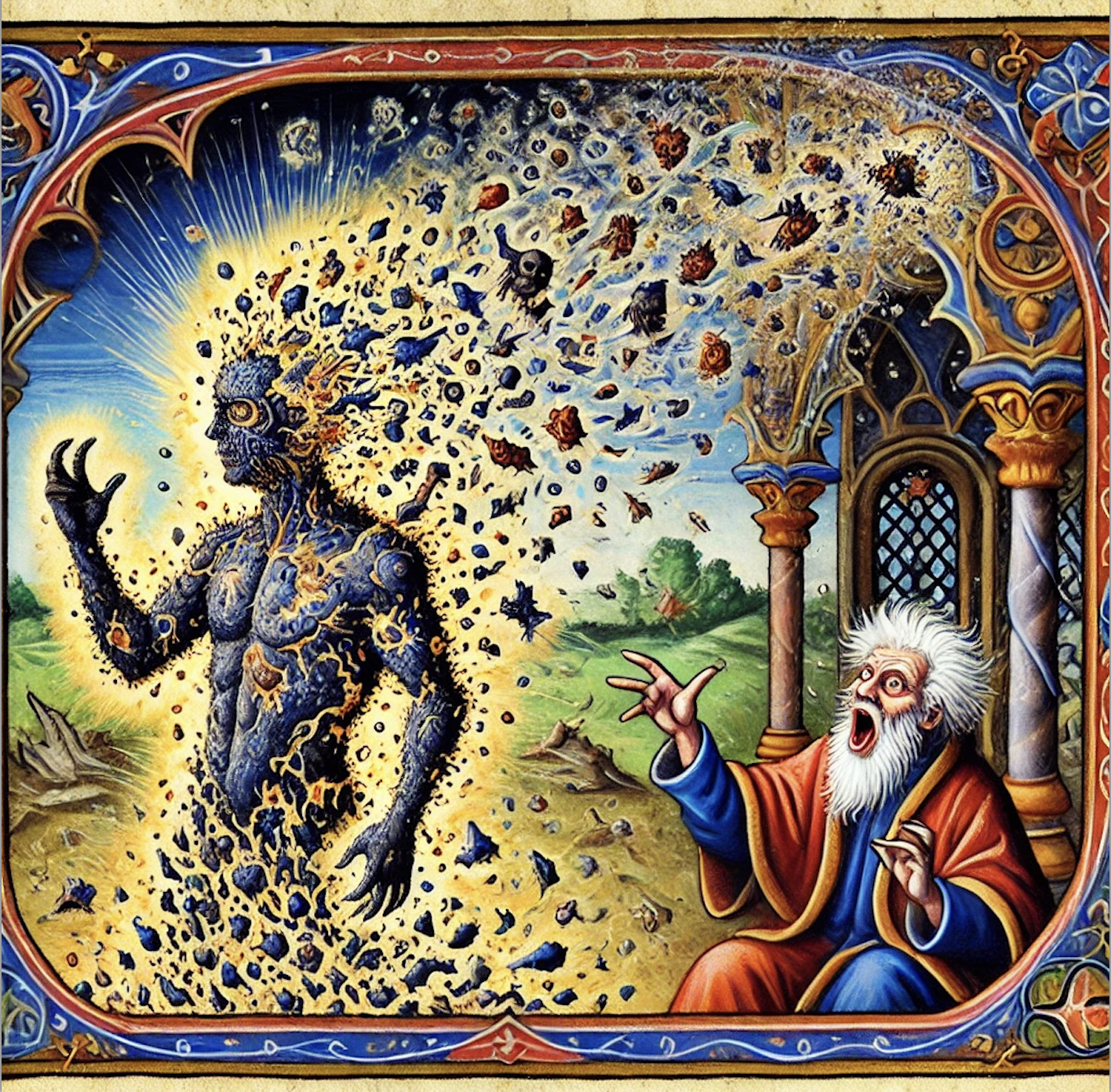Exploring controversial theories about Nephilim and the lustful Sons of God. Were they giants, fallen angels, warrior kings — or aliens?!
They’ve confounded readers of the Bible for centuries: the Nephilim — those enigmatic giants who, for a brief moment in Genesis 6:1-4, stride across the stage before vanishing into the mists of time. What are we to make of these mysterious figures, and the equally shadowy “sons of God” who, it seems, were quite taken with the local ladies? If you’re expecting a straightforward answer, prepare to be disappointed — or delighted, depending on your taste for ancient mysteries.
“When the Bible says the Sons of God took any of the women they chose, there’s no indication that their consent was considered. Today, we’d call that rape. ”
Divine Romances and Giant Offspring
Back when the world was young, shortly after the Creation and the Fall of Man, humanity was multiplying, and somewhere out there, celestial beings were looking down at the burgeoning population of Earth. And what caught their eye? The daughters of men, who, according to the text, were beautiful enough to inspire these sons of God to leave their heavenly abode and mingle with the mortals. The result? The birth of the Nephilim — described as mighty men, heroes of old.
It’s a story that practically begs for elaboration, yet Genesis offers little more than a tantalizing sketch. Who are these sons of God? What exactly were the Nephilim — and why do they get only a brief mention before the narrative shifts to the business of the Flood?
The Dark Side of Divine Romance: Consent? What Consent?
Let’s not sugarcoat this: The sons of God in Genesis aren’t exactly the chivalrous type. When the text says they “married any of them they chose,” we’re not talking about a whirlwind romance or a fairy-tale wedding. No, this is more of a divine free-for-all, where the daughters of men were taken — emphasis on taken — with no indication that their consent was considered. Today, we’d call that rape.
This little detail turns the story from a mythical dalliance into something much darker. It’s not just about heavenly beings mingling with mortals; it’s about power dynamics and the exploitation of vulnerability. The sons of God are exercising a celestial privilege, and the daughters of men are on the receiving end of a cosmic power play.
Some scholars argue that this part of the narrative reflects a broader theme of power imbalance — one that echoes through many ancient myths (including putting the blame on Eve in the Garden of Eden) and even into modern discussions about consent and authority.
These divine beings, with all their supernatural power, saw something they wanted and took it, consequences be damned. And what were those consequences? Enter the Nephilim, the chaotic offspring of these unions, who were as much a symbol of the moral disorder as they were of physical might.
In this light, the Flood that follows can be seen as more than just a reset button for a world gone wrong; it could be a divine response to the abuse of power. The story’s about what happens when those with power overstep their bounds, and how, in the end, that kind of violation brings about its own downfall.
Sons of God: Angels Gone Wild?
But what exactly were these dubious creatures? One popular interpretation, especially in early Jewish thought, is that the sons of God were fallen angels — divine beings who, perhaps bored or rebellious, decided to have a little fun on Earth.
This view is championed by the ancient Book of Enoch, a text that didn’t make the biblical cut but still managed to influence a lot of early Jewish thought. In Enoch, these sons of God were explicitly identified as angels who not only fathered the Nephilim but also taught humans all sorts of forbidden knowledge — think weapon-making, sorcery and makeup tips.
If we’re to believe this interpretation, the Nephilim were half-divine, half-human hybrids, giants whose very existence was an affront to the natural order — part of a roster of monsters of the Bible.
Genesis 6 reflects an ancient belief in a world teeming with divine beings who sometimes overstepped their bounds, argues Michael Heiser, in his book The Unseen Realm: Recovering the Supernatural Worldview of the Bible. The sons of God are best understood as members of the divine council who rebelled against God, leading to the corruption of humanity through their offspring, the Nephilim. This reading positions the Nephilim as symbols of chaos, a divine error that needed correction — cue the Flood.
The Nephilim: They Might Be Giants
Not everyone is on board with the angelic interpretation. Some scholars suggest that the sons of God were actually members of a ruling class — mortal kings or warriors who, through their power and prestige, were seen as godlike.
In this view, the Nephilim were their offspring, not so much giants in the literal sense but towering figures in terms of reputation and strength. After all, Nephilim is sometimes translated as “fallen ones,” which could just as easily refer to warriors who fell in battle as to beings cast out of heaven.
The story is less about divine transgression and more about setting the stage for the Flood, agrees John Walton in The Lost World of Genesis One. He suggests that the Nephilim and the sons of God are narrative devices used to illustrate the moral decline of humanity. The story reflects the ancient Near Eastern understanding of kingship, where rulers often claimed divine parentage to legitimize their authority. The Nephilim, then, are not the literal giants of later myth but represent the corrupting influence of unchecked power.
The Legacy: From Giants to Modern Myth
Whatever their origins, the Nephilim have left a lasting mark on our imaginations. They’ve been linked to everything from the ancient Greek titans to the giant skeletons that pop up in dubious archaeological reports.
In modern times, the Nephilim have marched their way into modern fiction, appearing as the heroic Shadowhunters in Cassandra Clare’s The Mortal Instruments series — proof that these ancient giants still loom large in our collective imagination.
They’ve even been co-opted by fringe theories and conspiracy buffs, who see in the Nephilim evidence of ancient alien visitations or secret histories suppressed by mainstream scholars.
So, what are we left with? A tale of divine beings who might — or might not — have fathered a race of giants, a story that straddles the line between history and myth. –Wally

